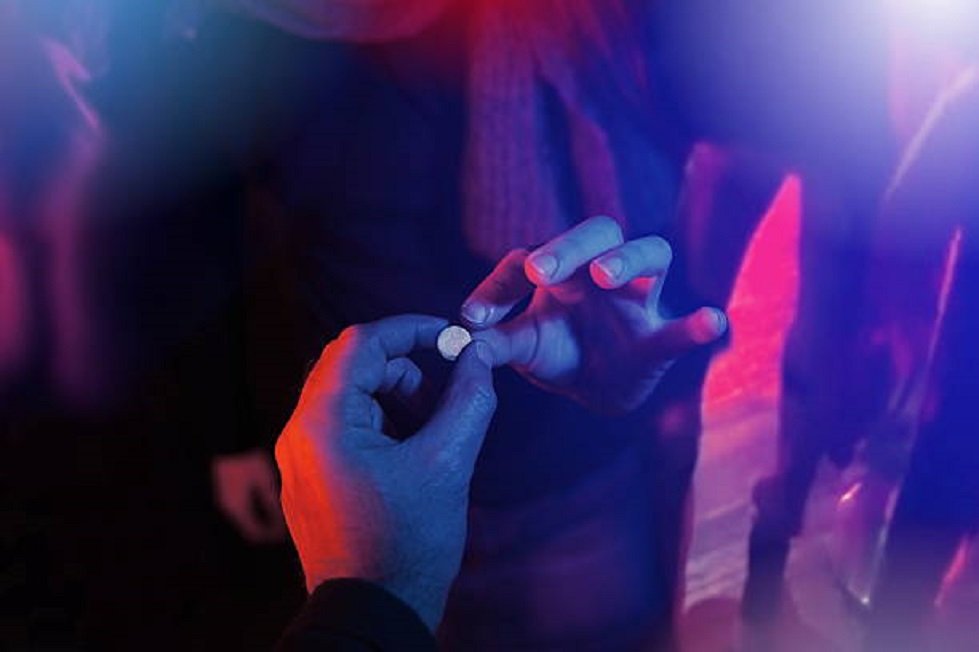Casual users at risk from party drugs cut with opioids
Wednesday, May 8, 2024.
Planning to party, rave and sesh in the coming weeks? Be careful. According to NSW Health a number of people have died in recent weeks from opioid overdoses after taking drugs thought to be cocaine and methamphetamine, and drug experts are worried that stimulant and party drug users not aware of opioid harm reduction information are at risk.
The lay of the land: increasing stimulant use in NSW
A friend taps you on the shoulder at a house party. Their other hand bears a gift. A mountain of rack hovers centimetres from your nose.
Or how about this: the rave crowd swells. You can feel waves of bass from the 10-foot speaker stack in your chest. You reach for the bag of shard in your pocket and your house keys.
It’s a familiar scenario for residents in NSW; we undeniably adore stimulants. Sydney is a city where the waters run rich with stimulants. Literally. Wastewater testing by the Australian Crime Intelligence Commission has consistently shown that Sydney is the cocaine capital of Australia. According to the latest estimates, Sydneysiders have vacuumed up almost half of the total weight consumed nationally. On top of this, coke use is on the rise after a pandemic-era slump.
Those same findings demonstrated that meth use across the country has surged with those in regional areas favouring ice more than their urban counterparts.
It puts users in NSW in a vulnerable position. As our bodies develop tolerance to stimulant drugs, we feel the need to consumer ever-larger quantities. But what happens when suppliers further up the chain have cut our stimulant drugs with opioids we don’t have experience taking? What happens when white powders and crystals that look remarkably similar are all mixed together?
Night owls and party people increasingly at risk of opioid overdoses
Dr Darren Roberts, NSW Poisons Information Centre Medical Director, said that “opioid overdoses can quickly result from a single line or point” of a perceived stimulant drug.
Professor Nicholas Lintzeris, an addiction medicine specialist at the University of Sydney and the South East Sydney Local Health District, expressed concern that there are “hidden populations” of drug users who don’t traditionally access drug harm reductions services in light of recent drug alerts and media coverage.
“They’re not people identified with drug cultures. They’re just people who like partying and doing bags of coke on the weekend,” Professor Lintzeris said.
“Harm reduction strategies really target opioid users: medically-supervised injecting rooms, take-home naloxone, methodone maintenance and buprenorphine [‘bupe’] treatment,” he explained.
The challenge for drug harm reduction organisations and health services, Professor Lintzeris suggested, is reaching new audiences and communities.
“It’s a real concern that these [opioid] drugs also seem to be present in non-opioid drug supplies.”
Data indicates that the adulteration of street drugs in Australia with more harmful (and unexpected) drugs is widespread.
Directions Health Chief Operating Officer Stephanie Stephens, who oversees the operations of CanTEST, a fixed-site drug testing facility in Canberra, said the evidence is clear: “At CanTEST we’ve done tests on around 2300 samples over the past 21 months and about half of all samples have some kind or filler or adulteration.”
“There have now been 4 world-first [drug] detections at CanTEST.”
Stephens said that drug harm reduction groups in Canberra are concerned about synthetic opioids – opioids produced in a laboratory rather than from natural substances found in the opium poppy plant – entering local illicit drug markets as both a cutting agent and a powerful standalone product. While North America’s fentanyl crisis has dominated the front page of the internet in recent years, thanks to the efforts of gonzo journalists and YouTube documentarians like Andrew Callaghan, aka All Gas No Brakes, fentanyl, a synthetic opioid 50 times stronger than heroin, is largely absent from Australia’s illicit drug markets. But recent detections of nitazenes in Australia, an even more potent synthetic opioid than fentanyl, has both Stephanie Stephens and Professor Lintzeris concerned.
So what should we do about this?
If you’re trying a new batch of coke or ice, start with smaller than usual doses and make sure you are not alone. Watch out for unexpected drowsiness, loss of consciousness, slow breathing or snoring, and skin turning blue or grey as these are signs of opioid overdose.
Professor Lintzeris suggested that stimulant users always carry naloxone on them. Naloxone is a non-prescription nasal spray that rapidly and effectively reverses the effects of an opioid overdose. In short: it can be a life-saving medication. What’s more: some community pharmacies and needle and syringe programs supply naloxone for free.
Emphasising the need for more drug testing services based on the Canberra CanTEST model, that is drug checking sites outside of music festivals, and the absence of a permanent fixed-site drug checking in NSW, Professor Lintzeris underlined the importance of individuals obtaining fentanyl test strips.
“They’re legal and available now. Anybody can go get them,” he stated.
It’s important to note, however, that fentanyl test strips cannot detect certain synthetic opioids such as nitazenes.
Professor Lintzeris told User’s News that “education and awareness” is vital.
“Take-home naloxone is a really important strategy. But hardly anyone who is not a heroin user in Australia knows anything about naloxone.”
Refusing to use the word “contamination” regarding opioid adulteration, Professor Lintzeris sees benefit in stimulant users discarding stigma and adopting the safety practices of injecting communities. The issue is not that opioids are necessarily worse, but that stimulant users have little tolerance to the unexpected presence of opioids in their party drugs.
See also: Unwanted Opioids Found in Crystal Meth

